Blog
Please follow us and subscribe to our RSS feed for updates as we post new material.
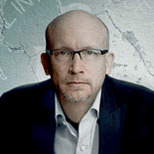
Anatomy of Propaganda – Part Two

In his classic novel 1984, author George Orwell described the technique of propaganda: “To tell deliberate lies while genuinely believing in them, to forget any fact that has become inconvenient, and then, when it becomes necessary again, to draw it back from oblivion for just as long as it is needed, to deny the existence of objective reality and all the while to take account of the reality which one denies.”
Going Clear is yet another Gibney rehash of false, stale and unproven claims. Virtually every allegation in the film was promoted for years by the same handful of embittered malcontents in the pages of the struggling St. Petersburg Times (now Tampa Bay Times) as part of its inflammatory anti-Scientology agenda. It was later regurgitated by Gibney’s co-producer Lawrence Wright for a New Yorker article and book before ending up as the substance of Gibney’s film.
Gibney’s epic recycling of old claims was transparent. The website Slant labeled the Wright-Gibney film a “lazy, sensationalistic piece of cinematic journalism” wrapped in “two hours of talking-head interviews, reenactments, and pointless scaremongering.” Spliced Personality stated succinctly, “What we don’t get is anything new.” Or, as the Times of London put it, Going Clear is “a hugely overlong and dull piece…”
Gibney, while still daring to call himself a documentary maker, said, “It’s not about the facts, it’s about the texture.” What follows is a series of snapshots revealing how Gibney manipulated the facts to create the texture he wanted for his film on Scientology—the vilification of a religion and the people who practice it.
Alex Gibney went to extraordinary lengths to avoid the truth. At an International Documentary Association event in Los Angeles on September 28, 2015, a man in the audience named Norman Taylor asked Alex Gibney a pointed question. The director predictably ducked.
Taylor is the former husband of Spanky Taylor, who in Gibney’sGoing Clear tells a melodramatic tale of “escaping” the Church with their daughter 37 years ago while failing to explain why she stayed in the Church for six more years. Calmly and forcefully, Norman Taylor asked Gibney why, in making his one-sided hatchet job, he never bothered to corroborate his ex-wife’s version of events, which Norman categorically disputes as revisionist fiction. As her husband at the time, no one was in a better position to know the true story.
Gibney replied: “We didn’t reach out to Norman Taylor and didn’t reach out to a lot of ex-husbands or ex-wives because it seemed like they might have an ax to grind.” No, they might have had facts pertinent to the claims being made.
A lack of research, and reliance on what’s been done before.
For Going Clear, Alex Gibney recreated Lawrence Wright’s book of the same name “to get the story we wanted.” Gibney uncritically accepted co-producer Wright’s pronouncements (“I trusted Larry—I wasn’t looking for holes in his story” and “I relied on Larry a lot,” he said) despite the gaping holes in Wright’s works. Instead of doing his own research, Gibney accepted at face value every allegation made by Wright’s discredited sources. While some wound up on the cutting room floor, what made it onto the screen amounted to one error every two minutes on average.
Gibney never checked a single “fact” related to the Church. In the fallout from these violations of rules of documentary making, the film’s UK distributor was compelled to add this disclaimer at the beginning of the film:
“The following documentary contains allegations by former members of the Church of Scientology against the Church and some of its current members. The Church contends that it was not given an adequate opportunity to comment on these allegations. It denies the allegations and says they are made by discredited former Scientologists.”

Anatomy of Propaganda – Part One
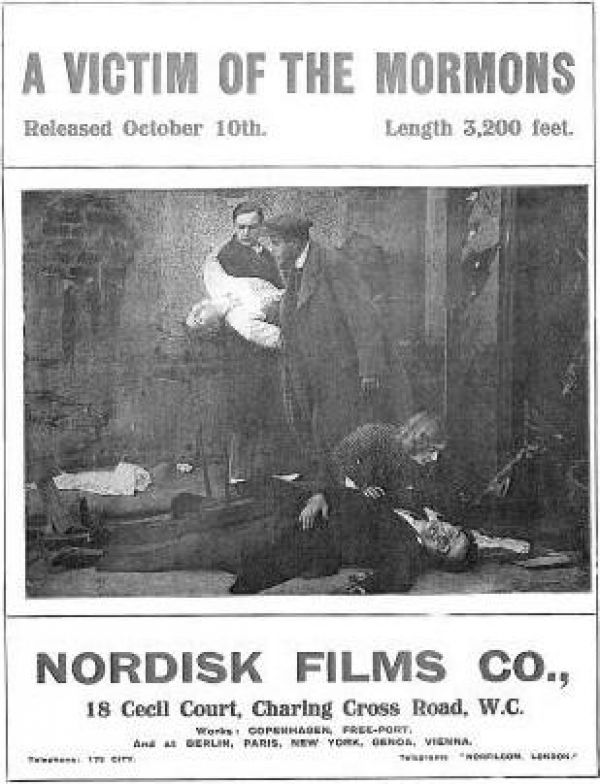
From the silent reels of A Victim of the Mormons in 1911 through director Alex Gibney’s HBO TV movie Going Clear in 2015, film for more than a century has been a favorite tool used by those inciting hate—particularly religious bigotry.
Preying on irrational fears and ignorance, bullies with cameras craft one-sided propaganda that simultaneously mocks people of faith while stirring incendiary hatred against them. Launched with preconceived agendas that never waver, story lines are immune to any facts, evidence and eyewitnesses threatening to contradict them. At a time when religious hatred and violence are spreading at an alarming pace, adding bigoted propaganda to the mix can only make for a dangerously combustible combination.
While the word “propaganda” began as a neutral term that described the effort of Catholic missionaries in the 1600s to spread the faith, the 20th century saw it hijacked by those with ambitious hate-filled agendas. In his 1928 treatise Propaganda, Edward Bernays, the father of public relations, laid out how the arts of persuasion could be used by the deceitful for nefarious ends:
“Propaganda becomes vicious and reprehensive only when its authors consciously and deliberately disseminate what they know to be lies, or when they aim at effects which they know to be prejudicial to the common good.”
Bernays cites as an example an Imperial Wizard of the Ku Klux Klan manipulating the fears and prejudices of “the common man of the older American stock” against “the newer immigrants” to the point “he buys the sheet and pillow-case costume, and bands with his fellows by the thousands into a huge group powerful enough to swing state elections and to throw a ponderous monkey wrench into a national convention.”
As film technology advanced as an entertainment and news tool, it was co-opted by propagandists and bigots who recognized the power of images. In the early 20th century, Mormonism was a favorite target of a status quo threatened by a new religion. A decade of propaganda demonized the faith, culminating with the 1922 film Trapped by the Mormons. The films led audiences to believe their women would be kidnapped and enslaved as wives.
Likewise, Hitler and his propaganda henchman Joseph Goebbels used vile films to incite hatred against the Jews, spreading myths and stereotypes in setting the stage for what would be the massacre of 6 million. While films like Leni Riefenstahl’s infamous Triumph of the Will and Olympia were used as propaganda to glorify the Nazi regime, it was historically less well-known films that served to stir up religious hatred with naked propaganda. They included The Eternal Jew, The Rothschilds and Jud Suss, which was shown by decree to the thugs in Hitler’s SS.
Fast forward to today’s combustible period in which religious violence is tragically taking lives around the world. Film sadly remains a vehicle for religious bigotry and those who seek to incite hate.
Christians are made fun of through such films as Jesus Camp and Saved, while one-sided films like Alex Gibney’s Mea Maxima Culpa placed a target on Catholics. Mormons are parodied in films like Orgazmo, while Islam was mocked in the small production Innocence of Muslims that created a worldwide controversy.
All of which brings us to Gibney’s Going Clear TV movie, allegedly about Scientology, also used to incite religious hatred. As the product of openly atheist author Lawrence Wright and Gibney, who has a track record of blatantly one-sided films, especially when it comes to religious issues, Going Clear’s propaganda reflects the aggressively anti-religious crusades of these two friends and collaborators.
Gibney and Wright employed unreliable and discredited sources, crackpot psychological theories, claims from admitted liars that have been disproved in court, and a thinly disguised personal hatred of religion under the phony disguise of unbiased journalism. The result was two hours of stereotypes and religious demonizing that served as an ode to bigoted anti-religious propaganda of the last century.

Running From the Truth
New York Magazine’s article about Alex Gibney (“How Alex Gibney Is Reinventing Documentary Filmmaking,” June 27, 2016) concedes that Alex Gibney’s “only interaction with active Scientologists [for his HBO movie Going Clear] was via legal threats and public confrontations.”
In other words, he did not do his job. Gibney hid from the Church of Scientology for two years making his film in secret. In two years he took no opportunity to “interact” with Scientologists, let alone pay a visit to the Church in New York.
The Church wrote to Gibney multiple times with one simple request: a fair opportunity for the Church to respond to allegations he was planning to make. He refused. He even went so far as to shun 25 people who traveled to New York expressly to see him, individuals who had firsthand knowledge relevant to his film. But Gibney was loathe to hear the truth from those who knew best about the phony, provably false allegations in his film spun by his embittered, discredited sources.
The only reason Alex Gibney did not “interact” with Scientologists is because he did not want to. That’s why his film was propaganda, not a documentary.
See, http://www.freedommag.org/goingclear/videos/letters-to-alex-gibney.html.

Alex Gibney’s CIA Father
A Final Look at Documents from the FBI File.
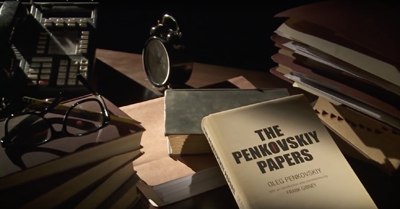
According to documents released by the FBI, Frank Gibney’s deceptions weren’t limited to writing fraudulent government propaganda. He also deceived his bosses. On July 22, 1965, Huntington Hartford, then one of the world’s richest men, wrote to the FBI about a magazine where he had installed Frank Gibney as publisher:
“During the first two years of publication Gibney sent him various glowing reports concerning advertising contracts which had been secured with large companies and speculation concerning increased circulation projected for the following year or two. He said he found these reports to be false … and added that he, Hartford, was losing several million dollars a year publishing the magazine.
“Hartford advised that Gibney took several trips around the world supposedly in the interest of the magazine and yet he knew that such expenses were hurting the already failing magazine. … [H]e felt that Gibney had been dishonest and unloyal to him because he hid the true status of the magazine in glowing reports and he also felt that Gibney was furthering his own interest rather than those of the magazine…. Hartford concluded that based on the above he could not recommend the appointee for a position with the United States Government because he felt that the appointee might be unloyal to the government by furthering his own interests rather than those of the United States Government.”
Two Gibney associates from another magazine echoed Hartford’s sentiments in a July 27, 1965, FBI report. According to one, “Gibney left this organization with the impression that he was ‘all for Gibney’ and had no loyalty to his employer,” noting also that Gibney had failed to repay a $7,700 loan from the company.
According to the same report, the editor “stated that as far as he is personally concerned he would not ask the appointee to do anything for him or this company.”
In all, government documents on Frank Gibney paint a much different portrait than the rebellious myth his son perpetuates. In fact, they show Frank had no problem shredding the truth, be it in publishing a book based on a phony Soviet “diary” or making up sales figures for his employer. A lie is a lie. It’s no wonder Alex shows no qualms about making entire propaganda films using documented falsehoods. It’s clear he learned his craft well, from the master.


Alex Gibney’s CIA Father
More documents from the FBI file.
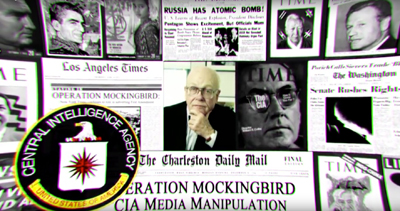
FBI documents concerning Alex Gibney’s CIA father, Frank Gibney, continue to provide further insight:
While at Life magazine, Frank Gibney’s insider status in the spy community was clear in letters made public by the CIA, including one to Director Dulles on January 5, 1960 (mistyped “1959” in the original). In that letter, Gibney requested “a sustained conversation with you alone.”
On January 9, Dulles replied, saying he “would very much like to get together with you for a good talk. The next time that I am in New York, I will make it a point to get in touch with you.” A handwritten postscript noted, “If in the meantime you are here in Washington, please let me know.”
Dulles, CIA director from 1953 to 1961, oversaw a secret agency endeavor named Mockingbird that recruited journalists and used them covertly, like the creature of that name—to chirp out intelligence again and again, and loudly.
Operation Mockingbird was exposed in 1979 by Deborah Davis in her book Katharine the Great: Katharine Graham and Her Washington Post Empire.
“You could get a journalist cheaper than a good call girl, for a couple hundred dollars a month,” Davis quoted a CIA operative as saying.
Another Gibney letter to Dulles, dated April 16, 1960, asks, “If next week is just too bad for you, could we do it sometime the following?”
What is significant about Gibney’s seemingly innocuous note was that he was just months away from publishing The Khrushchev Pattern in February 1961, aimed at scaring the American public about the Communist threat. Kirkus Reviews book review magazine summarized its contents mildly: “It is Gibney’s conclusion that Khrushchev’s superficially reasonable tactics are as terrible a threat as Stalin’s more obvious aggression.”
That same month, freshly inaugurated President John F. Kennedy wrote a cordial letter to Khrushchev, expressing his intention “to do everything I can toward developing a more harmonious relationship between our two countries.”
Gibney’s book appears to have been strategically timed to bolster his friend Allen Dulles’ Cold War plans and to torpedo hopes for dialogue, security and peace, much as a 1959 Gibney anti-Soviet screed, The Frozen Revolution, was aimed at chilling President Eisenhower’s warming relations with Khrushchev.
But Frank Gibney’s secret government propaganda masterpiece was The Penkovsky Papers, described in a 1976 U.S. Senate report that didn’t mince words as a “CIA book … prepared and written by witting Agency assets.” It purported to be the writings of Oleg Penkovsky, a colonel in Soviet military intelligence who was executed in 1963 after providing information to U.S. and British intelligence.
The “witting Agency assets” were Frank Gibney and Peter Deriabin, a Soviet defector who had been an agent of SMERSH—Soviet military counterintelligence—and the KGB. Deriabin defected in 1954 and subsequently worked for the CIA for decades, collaborating on an earlier book with Gibney, The Secret World, and retiring from the agency in 1981. As a sign of Deriabin’s sensitive status, after he died in 1992, the CIA reportedly kept the names of his family members secret. But Deriabin and Gibney, the “journalist,” worked side-by-side on at least two books.
Not everyone was fooled by the deception. Regarding The Penkovsky Papers, the Historical Dictionary of British Intelligence noted “odd passages in the book, including some rather old-fashioned phrases that made it unlikely Penkovsky had written them.”
A December 25, 1977, New York Times article noted the book was compiled by Gibney from CIA records. The Times quoted a CIA official: “It was not a diary and it was a major deception to that extent.” Another former official said the book was “cosmetized,” while a third noted the absurdity of believing that spies keep diaries in the first place. Finally, the man his son Alex describes as a “truth seeker” admitted to the Times that “the journal as such did not exist.”
Additional CIA papers refer to Frank Gibney with the comfortable familiarity of an old pair of slippers or a well-worn sofa. A March 5, 1960, memorandum, classified “Secret,” discusses a prospective propaganda piece “to be written by someone like Frank Gibney of Life.” A March 29, 1960, memo, similarly marked “Secret,” refers to “Frank Gibney, the Time Life writer who worked with Deriabin on his book.”
In the FBI interviews with former Gibney editors Max Ways and John Jessup, Ways took a swipe at the integrity of Gibney’s research, pointing out that his book The Operators “relies on unreliable statistics.”
According to information Jessup provided, Gibney “wrote a book, not signed, concerning a Russian defector, [the previously mentioned] Peter Deriabin which was originally printed in two or three installments of Life—what appears to be a textbook example of Operation Mockingbird in action. Of note, an influential figure at Time Life for many years, and Life publisher from 1960 until his death in 1964, was intelligence community heavyweight C.D. Jackson, described by Carl Bernstein as Henry Luce’s “personal emissary to the CIA.” Jackson, Bernstein reported, “approved specific arrangements for providing CIA employees with Time Life cover.”
More to come…

Alex Gibney’s CIA Father.
Documents from the FBI file.
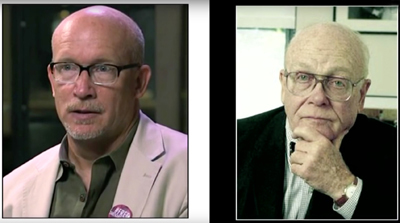
As we reported earlier, it was the late Frank Gibney, a journalist who was secretly part of the government’s massive Cold War propaganda and disinformation machine, who launched his son Alex on his career path—propagandist extraordinaire making one-sided films.
Frank’s influence is evident in Alex’s films, be it on the Church of Scientology, technology pioneer Steve Jobs, WikiLeaks’ Julian Assange or the Catholic Church. Indeed, it was Frank who gave Alex his break when he served as project director on a 10-part 1992 documentary on Pacific Rim economies that Alex wrote.
Frank’s service as a government propagandist touches some of the biggest disinformation campaigns of the Cold War. In writing of that era in a 1977 piece for Rolling Stone, Carl Bernstein of Watergate fame stated that “more than 400 American journalists … in the past twenty-five years have secretly carried out assignments for the Central Intelligence Agency, according to documents on file at CIA headquarters.”
These assignments, Bernstein said, included “planting subtly concocted pieces of misinformation” and “serving up ‘black’ propaganda.” And one of the government’s loyal minions was Frank Gibney.
The FBI released 83 pages from its Frank Gibney file. Included are memos from some of the top figures involved in U.S. foreign and domestic spying showing they were intimately familiar with Frank Gibney. In fact, the nation’s top spy—former CIA Director Allen Dulles—was a regular pen pal.
Included in the document trove is a July 19, 1965, memo from FBI Director J. Edgar Hoover showing “[the] White House has requested rush investigation of Gibney, who is being considered for White House staff position.” Watergate’s “Deep Throat,” top FBI official Mark Felt, signed off on another memo that same day calling for “a full field investigation” of Gibney.
FOIA documents also show that in World War II, Frank was selected as an intelligence officer and Navy interrogator at the age of 18. Following the war, the papers note his work with Time Inc. and its publications, Time and Life. Bernstein reported that CIA officials described the agency’s association with Time Inc. as one of three that were “by far the most valuable.”
Of note, FBI records vastly contradict Alex Gibney’s own account of his father’s career. In an effort to paint his father as a muckraking rebel who bravely stood up to his bosses at the risk of losing his job, Alex told CBS News the following in September 2015:
“They say to succeed you’re supposed to suck up and kick down. Well, he was the classic guy who sucked down and kicked up, which is never a good career path! He was at Time, then fired. At Newsweek, fired. At Life, fired.”
But it’s not true, according to the FBI. One 1965 FBI report about Frank Gibney from the FOIA files shows that in their background check they found Frank “voluntarily resigned” from Time Life and that he left “for a position as editor of Show Business Illustrated.”
Those records also show that “On July 23, 1965, [name deleted], Personnel Department, advised that the appointee was last employed from July 15, 1957 to April 22, 1961, when he voluntarily resigned.” FBI interviews on July 22, 1965, with Max Ways, who edited Gibney’s work at Time, showed that neither he nor John Jessup, who supervised Gibney at Life, mentioned anything about Frank being fired from Time or Life. In fact, they said he “left Time Life because of a better offer from Show Business Illustrated.”
So much for Alex’s tale of Frank being fired for high principles. So son Alex’s propaganda now extends to the stories he tells about his own father’s career track. How accurate can his films be when he can’t even get the facts right about his own father’s life?
More to come…

Bigotry & Hate = Threats & Violence, part 2
When a deranged individual drove her car through the front of the Church of Scientology in Austin, Texas, after having seen Alex Gibney’s Going Clear, Gibney and his co-producer were quick to try to distance themselves from this insane act of violence.
What makes their “don’t look at us” (see Bigotry & Hate = Threats & Violence Part One) responses even more disingenuous is that at the same time they claim they don’t endorse violence against the Church, they warmly embrace rather than distance themselves from sources who specialize in violent anti-Scientology rhetoric.
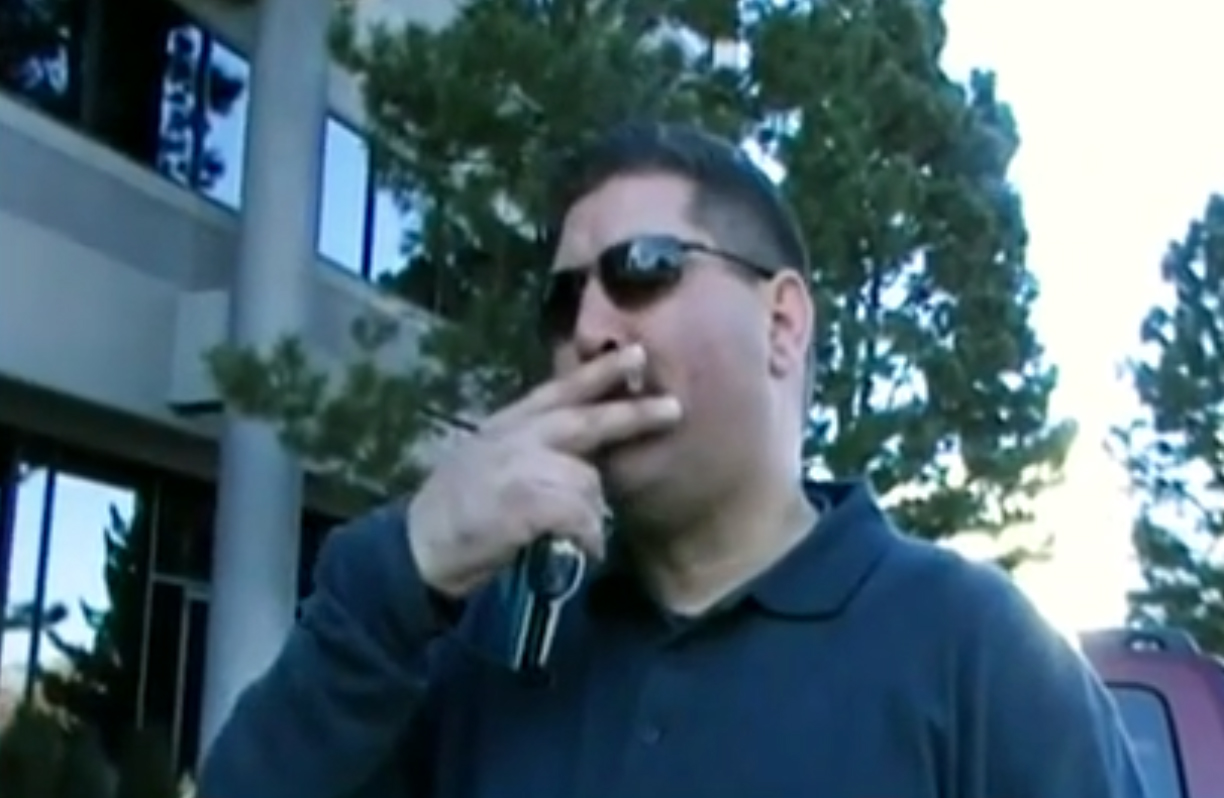
Case in point is Marc Headley, an embittered former staff member still seething with anger after being expelled when it was discovered he pocketed thousands of dollars from selling stolen Church equipment on eBay. Headley also still burns from the collapse of duel lawsuits he and his wife Claire filed, falsely claiming clergy abuse. A federal judge tossed them out as meritless, which was unanimously upheld on appeal, and the couple was ordered to pay the Church $42,000 in court costs for filing such a frivolous case.
Gibney thanks Headley in his film credits, even singling him out during the first screening at the Sundance Film Festival. Yet Gibney ignores that Headley’s angry self-published memoir was so filled with incendiary hate language that one individual admitted to law enforcement investigators that it inspired him to threaten sending an explosive device to the residence of the Church’s leader, to a Church and to a school, forcing an evacuation. Headley also has mocked the tragic accidental death of the daughter of a Church attorney with crude jokes, while also making sexually violent jokes about Church leaders.
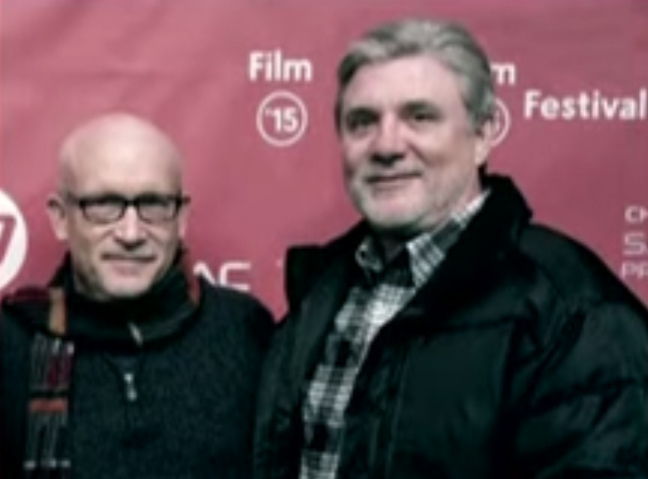
Then there is another Gibney and Wright pal, Mike Rinder, who HBO and Gibney flew around the country in five-star luxury to promote Gibney’s movie. Expelled for chronic lies that included conspiring to secretly suborn perjury in a Church legal case, Rinder now shills for sleazy ambulance chasers who unsuccessfully harass the Church with frivolous, failed litigation.
As a fringe anti-Scientology blogger, Rinder permits anonymous individuals to post violent threats toward the Church, including one who recently advocated “public execution.”
Gibney’s and Wright’s silence about incidents of violent hate speech directed toward the Church speaks volumes. Their entire pseudo-documentary was so one-sided they ignored repeated requests from the Church for information about the content so it could fairly respond.
As reckless inciters of hate, Gibney and Wright want to have it both ways when it comes to the First Amendment. They evoke freedom of speech and expression when it recklessly promotes those who condemn, mock and even threaten people of faith. But they denigrate and mock those with religious beliefs, showing no respect for their Constitutional right to practice religion as they see fit.

Bigotry & Hate = Threats & Violence, Part 1

If there is any doubt that Alex Gibney’s bigoted, blatantly one-sided HBO movie about the Church of Scientology irresponsibly incites religious hatred and even violence, one need look no farther than Austin and Los Angeles.

In Austin, a woman who unabashedly endorsed and promoted Gibney’s propaganda via social media sits accused of a felony for driving her Acura sedan across a sidewalk to smash through the glass front door of the Church of Scientology next to the University of Texas campus. She plowed her car through the lobby, narrowly missing startled parishioners before coming to a stop just in front of a nursery where children were playing hours before. After her arrest, the suspect continued spewing anti-religious hate about the Church to police, even expressing disappointment that no one was injured.
In Los Angeles, a Chicago man pleaded guilty to one felony count of making a criminal threat and one count of stalking after calling the Church threatening to kill its leadership and “every single one of you.” The suspect told police he became angered about Scientology after viewing the “HBO special” (Gibney’s film).
In a third incident, a deranged young man drove to the front reception of the Church of Scientology of Los Angeles, got out of his car and threw a hammer through a window, retrieved the hammer, threw it again a second time even more forcefully, and drove off. His attack followed e-mail threats to a Church member. The man was subsequently arrested by police and is awaiting trial.
Incredibly, the only response from Gibney and his co-producer Lawrence Wright wasn’t to condemn such acts, but to take to Twitter after the Austin hate crime to cover their collective behinds. Wright’s passive missive was, “For the record, I don’t support such actions” to which Gibney responded, “Me neither.” Gibney then shamelessly used the opportunity to promote his film with: “Woman who saw #goingclear smashed car into Scientology building in Texas.”
Forget that the tweets are utterly inane—what sane person does support the endangering of lives by crashing a car through the front door of a religious institution? What the knee-jerk reaction really shows is that Gibney and Wright knew their hit jobs were so incendiary that it was just a matter of time before an unhinged, troubled individual would be incited by their propaganda and lash out.
With their bigoted books and films, Alex Gibney and Lawrence Wright plant the seeds of violence. And as the recent hate crimes directed at the Church show, they also reap what they sow.

The Prison of Bigotry
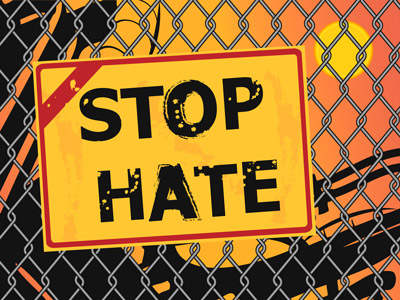
“We betray the efforts of the past if we fail to push back against bigotry in all its forms.”—President Barack Obama in a December 9 speech at the Capitol Visitor Center’s Emancipation Hall.
Alex Gibney’s bigoted, one-sided propaganda aimed at inciting religious hate has no place in America, let alone in today’s world. Yet the blue-blooded, anti-religious clique that fawns over him gives him a pass to spread his intolerance.
It’s Gibney’s own prison of bigotry built with the help of his friend and co-producer Lawrence Wright that strives to generate as much hate and ridicule as possible for anyone whose beliefs are different from theirs.
At the root of his callous disregard and disdain for those who exercise their Constitutional First Amendment right is blatant bigotry toward all religions. President Obama underscored the importance of tolerance in his speech, saying, “Our freedom is bound up with the freedom of others, regardless of what they look like, or where they come from, or what their last name is or what faith they practice.”
Gibney holds a dark and hostile view toward anyone of faith, equating beliefs to a “prison,” which manifests itself in the religious hate he recklessly incites against a Church whose basic tenets involve cherishing freedom, peacefully respecting the law, honoring the rights and beliefs of others and making the world better.
At a time when religious hatred and violence are spreading at an alarming pace, adding bigoted propaganda to the mix can only make for a dangerously combustible combination.
As columnist Andrea Peyser wrote in the New York Post recently:
“This may be the last acceptable form of religious bigotry. While even the most ardent enemies of organized faith would hesitate to trash Christianity, Judaism or Islam, followers of one form of worship are open for mockery and accusations that they belong to a sinister cult. It’s time to give Scientology a break.”

Art of the Propagandist Revisited
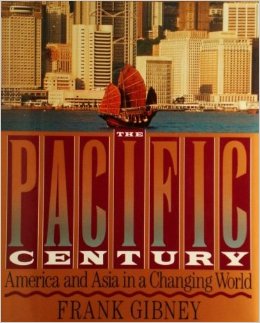
This week being the 74th anniversary of the Japanese invasion of Pearl Harbor, it cannot help but remind us that Alex Gibney’s father, Frank Gibney, served as a combat interrogation specialist for the Office of Naval Intelligence and spent much of that war interrogating Japanese prisoners of war.
Thereafter, the senior Gibney’s career never took him far from the intelligence community. Whether it was popularizing the U.S. government’s position concerning Soviet aggression in Eastern Europe, or cobbling together a fake diary of a Soviet officer who had been passing secrets to the British and American intelligence, much of Mr. Gibney’s career as a journalist never drifted far from Uncle Sam’s shadow. Indeed, an April 1976, a Senate Intelligence Committee report described him as one of a group of “witting Agency assets” in journalism.
But what does this have to do with his son Alex?
Alex Gibney’s father was a major influence on Alex’s career and unquestionably passed on the techniques he used to popularize U.S. foreign policy for the CIA to his son. A case in point is the project that launched Gibney’s career: a documentary for the Public Broadcasting Service entitled, The Pacific Century. While Alex Gibney is credited as the film’s writer, the bulk of the material comes from The Pacific Century, a written book by Gibney’s father to accompany the television broadcast. Further, the project was sponsored by the Pacific Basin Institute, a think tank founded by the elder Gibney. Was this project an effort to shore up U.S. economic relations with Pacific Rim nations during a major U.S. recession and at a time many Americans considered Japanese products to be inferior? We will probably never know. But in it we see the elder Gibney again coming to the aid of the government at just the right time. Only this time, Alex was at his feet, learning from the master.
Alex Gibney’s use of the techniques of the propagandist are clear from his work. No one, including Gibney himself, considers his films to be objective. The question is whether such films deserve the label of documentary or whether they should be considered as simply bigoted press agentry for whatever interests are footing the bill.


Alex Gibney—In the name of bigotry
Director Alex Gibney recently accepted the first Hitchens Prize, an award issued in the name of the late Christopher Hitchens.
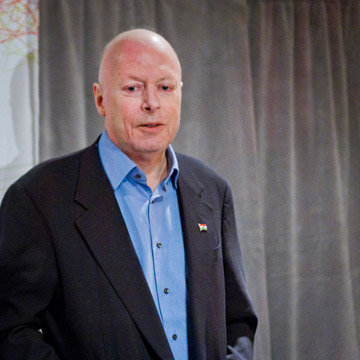
A loud atheist/socialist voice, Hitchens wrote for Vanity Fair from 1992 until his death in 2011. His VF article “Mother Teresa and Me” in 1995 incensed many by branding her “a tough-minded ideologue” and positioning her as a lapdog to dictators. A favorite drinking partner of Vanity Fair editor Graydon Carter, Hitchens was magazine’s go-to antireligious zealot, once referring to Pope Benedict XVI as “an overdressed little ponce.” While drinking himself to death, Hitchens charged that “there is conclusive evidence that faith causes people to be more mean, more selfish, and perhaps above all, more stupid.” His merciless bashings of the Catholic Church and anyone of faith in the pages of Vanity Fair were constant and transparently biased.
Hitchens’ 1995 now-infamous takedown of Mother Teresa so incensed the Catholic League that it bought a full-page ad in The New York Times in protest. The ad included such descriptions as the “profane marriage between tawdry media hype and medieval superstition [which] gave birth to an icon which few have had the poor taste to question.” Noting her tireless work for the poor and her Nobel Peace Prize, the Catholic League declared in bold type, “THERE IS NO DOUBT CONDÉ NAST HAS A PROBLEM WITH CATHOLICISM. IT WOULD BE MOST HELPFUL IF VANITY FAIR EXPLAINED WHY.”
It is only fitting that the first Hitchens Prize would go to Hitchens’ friend Alex Gibney, a director whose work reflects the same biased one-sidedness that infected all of Hitchens’ writings. In his acceptance speech, Gibney echoed Hitchens’ anti-Catholicism by retelling one of the author’s offensive anti-Catholic jokes involving a bottle of vermouth and the Virgin Mary.
Proudly announcing that he considered himself a friend of the late essayist, Gibney evidently was unaware of the type of people Hitchens selected for his companionship. Earlier this year, Gawker contributor Alex Pareene observed that Hitchens “was a man who purposefully cultivated a lot of friends of a certain type—rich, self-important, generally dimwitted and hence easy for a well-spoken Oxbridge debater to impress.”
Congratulations, Alex. You are in good company.

Film Review by Eric Sherman
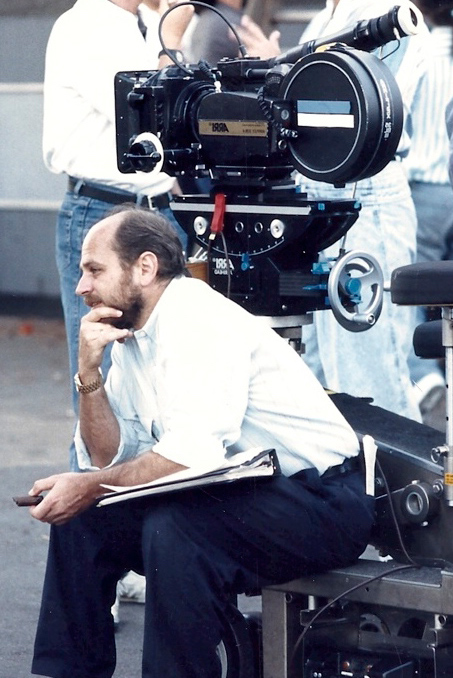
As a distinguished Hollywood film director and producer, Mr. Eric Sherman is uniquely qualified to analyze both the film and the subject of Alex Gibney’s movie on Scientology. Mr. Sherman has been making films since 1967. He co-founded the Yale Film Society and graduated as Yale’s first Scholar of the House in film, an honors program for independent study. He won the Peabody Award for producing and directing the PBS series “Futures with Jaime Escalante” and some 100 other awards for his fiction and nonfiction films. He has authored four widely used texts on directing and has lectured on directing and filmmaking at numerous universities. Mr. Sherman clearly doesn’t give Alex Gibney a passing grade.
I recently watched Gibney’s film from the viewpoint of a filmmaker. These are my informal notes from that viewing, comments and observations on various technical and ethical issues.
- A documentary about Scientology but almost nothing about Scientology in the film?? NO interview of any Scientologist??
- Beginning of the film, Lawrence Wright [film’s co-producer and author of the book the film is based on] says “My goal was to understand Scientology, what people get out of it.” Sounds good, sounds right, what any viewer would expect. But it never comes. Film never addresses this. Doesn’t ask the question, doesn’t answer it.
- Big item of interest to viewer: Want to hear from Scientologists why they are Scientologists, what it means to them and does for them. People are interested in other people’s religions. But no Scientologists in the film. The film never asks any Scientologist anything. Only critics.
- Film’s title is loaded, suggests a person’s beliefs can trap them. Skews the film right from the start. Expects audience to buy this premise but then shows nothing to support it. Ex-members and other detractors not convincing to viewer. Viewer perceives immediately that this is a one-sided view, makes viewer skeptical of filmmaker’s motives.
- BIG PROBLEM WITH FILM: Shows nothing about the religion at all. What do Scientologists believe, what are their religious practices, why they are active in their religion when organized religion is declining across the boards for many denominations. Basic questions anyone viewing a film about any religion would expect to be answered in a documentary about the religion. Not addressed in this film at all.
- BIG PROBLEM WITH FILM: Utterly one-sided, leaving viewer perplexed rather than convinced of anything. Two hours of detractors ranting about the Church and its leadership, with no counterpoint, no positives, no statistics. Causes rejection of the film because it’s so transparently one-sided. Causes suspicion about why not anything from the Scientology side of the picture and why is the filmmaker so obsessively anti-Scientology?
- Gibney’s film is most definitely not a documentary. It is a propaganda piece and should be labeled as such—“docuganda,” as attack pieces are called when they masquerade as documentaries. Barry Hampe [documentary maker and author of books on same] has written, “Today, partisan filmmakers are using the form of the documentary to do a hatchet job on people and things they don’t like, winning applause from all those who agree with them.
- Hampe also says: “…[T]here are filmmakers willing to use the form of the documentary without regard for the truth in order to present their own one-sided, biased or partisan views. When people calling themselves documentarians believe their mission is more important than the truth, we all suffer.”
- Hampe also writes: “What makes docuganda not documentary is its blatant one-sidedness.”
Here are some key definitions I teach film students in my classes:
- Definition of documentary: “A nonfictional motion picture intended to document some aspect of reality, primarily for the purpose of instruction or maintaining a historical record.” Gibney’s film fails on all points:
- “Nonfiction”: Requires that it’s “backed up by fact, by additional testimony, by incontrovertible information.” Typical method is utilizing statements on same or similar statement or question by those with opposing views. Given the extreme allegations in the film, viewer yearns for the “other side,” some measure of balance. Viewer is extremely uncomfortable when offered nothing with which to judge, not even point-counterpoint to enable him to formulate his own view.
- “Intended to document”: To document means to record. A record of the workings of a group would include some plus-side observations by members or even outsiders who know the group. There are none. The only images of actual Scientology “at work” are clips from films taken by Scientologists at commemorative events. Obviously meant for internal viewing, and likely used without permission.
- “Primarily for the purpose of instruction”: No intent to instruct anyone about anything in this film. No intent to inform or illuminate. The Church has made dozens of instructional films and videos but nothing from them here.
- “Maintaining a historical record”: History would be information backed by multiple and corroborating sources. Nothing like that here. Lots of assertions and allegations, but no evidence of any of them. Lots of old material told in “same old, same old” way.
- Dubious sources. No “clean sources.” Not credible sources because they are disgruntled ex-members and gone from the Church for years so no current knowledge of the Church. Other sources are professional critics with no knowledge or experience in the religion at all.
- No interviews with Scientology staff, but a lot of allegations that are ludicrous.
- No current stills or footage shot inside actual Churches. Gibney said in a TV interview in recent months that he did not request access. Normally the first thing a documentary maker does is request access. Why didn’t he ask?
- Gibney uses recreated scenes in his film and does not clearly label them as reenactments. This is dishonest and confuses the viewer, denying them the clear distinction between reality and recreation. If a filmmaker is going to stage an event, he had better say so.
- There are many “cheap shots” in the film that give very false impressions and would never be used by a filmmaker with integrity: The shaky hand-held footage is dull and uninventive. This style went out with the 1960s. The “shock cut” to a running guard is amateurish and is really stretching to create an impact. A close-up of ants crawling around, a close-up of a tongue licking a floor, one of the sources being led away by police—all give a totally false impression with no context for the viewer.
Final grade? Well, you get the idea.
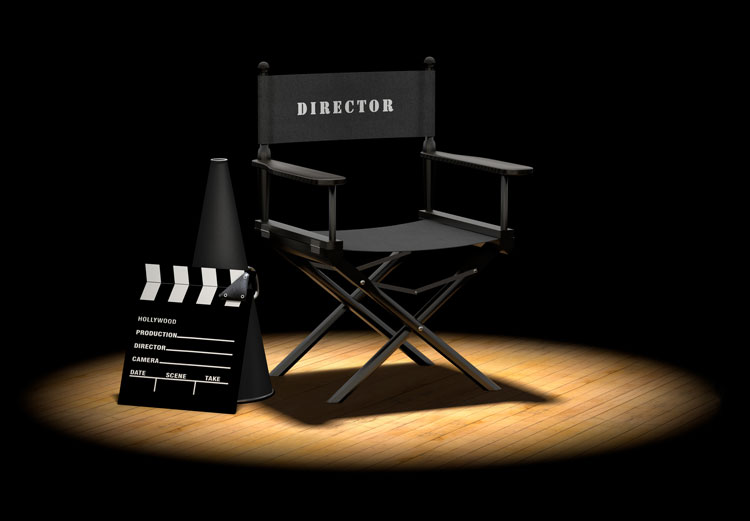
Alex Gibney and the spirit of prior restraint
Why did Alex Gibney feel the need to take to Twitter and attempt to get people not to talk to me? His pointed declaration—in less than 140 characters—suggests that he’s concerned about his peers, especially documentarians, reviewing his films with a critical eye.
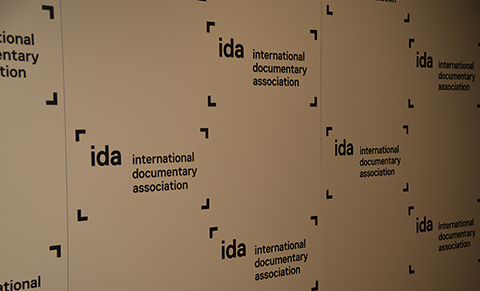
At a Q&A event September 28 in Hollywood, sponsored by the International Documentary Association, I decided to go ask Alex why he was compelled to warn people about a possible email or phone call from me about fairness and balance in his films. When my turn came to take the microphone at the Pickford Center’s Linwood Dunn Theater, I set up my question with a cordial greeting to Gibney and event moderator Ben Mankiewicz and introduced myself as “Joe from Freedom Magazine.” What ensued was an unfortunate and also very telling exchange.
My simple query was, “Why are you trying to censor people? Do you think people shouldn’t speak about your work with me?”
Before I could finish my succinctly composed question, Gibney’s kneejerk response tried to derail me. As I struggled to finish my relatively quick inquiries based on the verbatim tweet read aloud, Gibney hurried to interrupt.
Gibney’s tweet and his responses at IDA sought to cast shadows of suspicion on my cultivation of credible sources. His spin-doctoring in this instance is telling of his approach to documentaries just as much as it belies his intent to squelch a freelance journalist’s critical exploration of his work.
Efforts to cloak his failures of fairness behind the idea that what he sells is credible, hard-hitting journalism require a closer look. What one finds is that Gibney’s documentaries are little advanced from the Hollywood “schlock” that characterized, by his own self-deprecating admission, his early days as a B-movie film editor. Since then he has used his familial connections and a pandering press to morph such humble beginnings into an influential career.
Gibney’s overreliance on flashy cinematic effects and sources with glaring credibility problems, as well as transparent agendas, is hardly a hallmark of reliable, let alone pacesetting, documentary filmmaking. The same goes for his penchant for telling one-sided tales based on the assertions of cherry-picked tale-tellers who suit his glaringly preconceived storylines. His two most recent films, on Scientology and the late Steve Jobs, continue to bear the arrogant mark of someone who thinks he is not beholden to ethical standards for truth-telling.
Sensationalism sells in the corporate-controlled media landscape Alex Gibney works for. It’s no shock that mass market purveyors of programming such as HBO, which distributes Gibney’s films, blur the lines between fact and fiction in the interest of attracting a swollen swath of viewers. Judging by the direction Gibney’s work has taken in the last five years, it appears he and HBO pander to the same “clickbait” market of tabloid controversy, fixated on the prurient and anything shocking whether it’s true or not.
Gibney’s filmmaking style deceptively blurs the line between documentary and fiction. That may bode well for the bottom line of his corporate backers eager for buzz and sycophantic praise, but it’s a dangerous shift from important ethical standards. Gibney is indeed a poster boy for the dumbing down of documentary filmmaking. As he portrays fiction as fact to attract an audience more interested in the salacious rather than truth or accuracy, what should be healthy discourse becomes egregious defamation.
In a textbook on documentary production, University of California-Berkeley Graduate School of Journalism professor Jon Else astutely observes that as long as the audience is informed, there is nothing wrong with a little sensationalism. He warns, however, “the danger comes when documentaries purport to be vetted, objective and factual and in fact aren’t.”
That description fits Gibney. He claims his sources are trustworthy, even when he fails to vet them. Gibney may scoff at those who decry the blurring of the line between reality and fiction, as he did at his recent public exhibition when he dismissed the concerns of “documentary purists” and assured his audience that there’s nothing wrong with a little filmic deception. But as Else aptly points out: “There’s no question that there’s a direct connection between the eroding of truth-telling in documentary and the lust for ratings.”
Gibney poisons public discourse and primes it for baseless discrimination and intolerance. And in no uncertain terms, the message via his Scientology film is quite crystal clear: it’s OK to vilify Scientologists for their religious beliefs.
It’s ironic Gibney arrogantly disparages my right to question his motives and instead attempts to besmirch my journalistic standards. As a freelance print reporter for most of my life and a graduate of a prominent journalism school, I have a definitive picture of the importance of portraying events of public interest accurately, fairly and factually.
The experience at Gibney’s Q&A also gave me a glimpse of how it feels to stand for truth and ethical journalism in the face of overt prejudice and intolerance. It is an uncomfortable experience, but one I recommend for any American journalist and documentarian who cares to glimpse what the politics of exclusion is all about.

The apple doesn’t fall far from the tree
When you take the time to research all the claims Alex Gibney makes in his documentaries, it becomes obvious: Alex Gibney is not a journalist. He’s a committed propagandist.
How else to explain his hatchet job on the Catholic Church… his vicious character assassination of the founder of Apple Computer… or his fraudulent diatribe against the Church of Scientology?
Of course, Alex Gibney didn’t just become a propagandist overnight. He learned at the feet of a master – his father, Frank.
Frank Gibney is a graduate of Yale University, a well-known hub of CIA recruitment activity.
During World War II, the elder Gibney was a “translator” and “interpreter” for the U.S. Office of Naval Intelligence in Japan. He also took part in the interrogation of Japanese prisoners of war. What is not well known is that just like today, “interrogation” to extract information routinely employed torture. Some prisoners were even executed as an example to others.
Frank Gibney’s role in these practices has never been made clear.
After the War, Gibney transferred to the Tokyo Bureau of Time, where he worked under Time/Life editor C.D. Jackson, who some say was the heart and soul of the CIA’s Operation Mockingbird project.
Operation Mockingbird was a CIA program that used journalists throughout the media to plant CIA propaganda disguised as “news”.
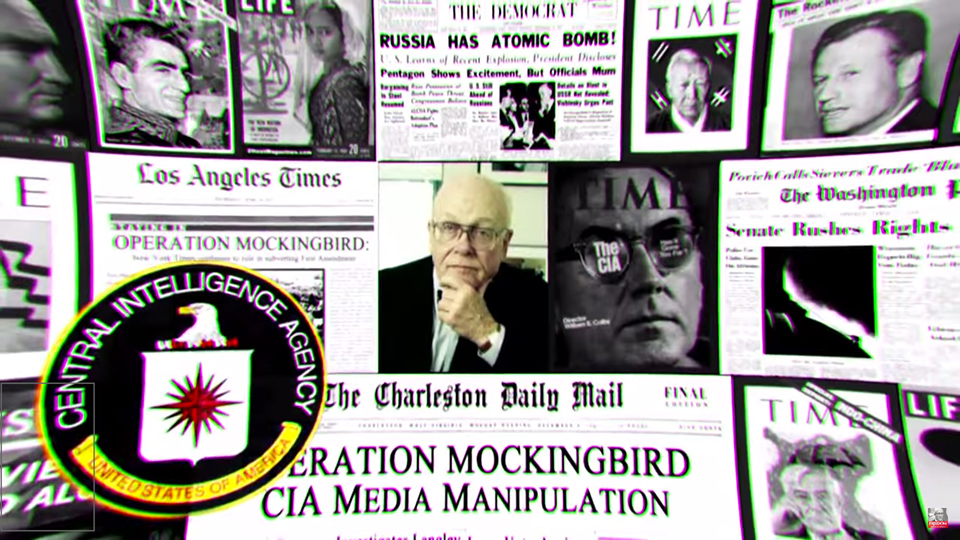
A personal friend of CIA director, Allen Dulles, in 1965, Frank Gibney wrote a book called “Penkovsky Papers” about a Russian double agent caught and then killed by the Soviet government.
After the book was exposed by the mainstream press as propaganda, Gibney was forced to admit not only that the book had been based on CIA disinformation files, but that its central conceit, a diary kept by Penkovsky, was entirely invented.
Apparently, Gibney neglected to realize that any good spy would never write a diary.
But Alex Gibney’s propaganda connections don’t stop there.
His stepfather, William Sloane Coffin, also went to Yale, and also worked for the CIA as an intelligence officer.
Alex Gibney himself went to Yale. It is not yet known if he too has any connections with the Agency.
What is known, however, is that Frank Gibney’s son Alex presents a very biased and one-sided view of the world that he wants you to believe is true.
This is a man who has said: “Everything is spin. And the idea is you go in, you tell your story forcefully and you stick to that story.”
And that is the very definition of propaganda.
Alex Gibney Meets Actual Journalists in the UK
On July 2, 2013, Alex Gibney proudly screened his WikiLeaks documentary to England’s prestigious Frontline Club, a society of professional journalists whose standards are admired around the world.
Gibney’s film: another piece of historical revisionism, this time on the website WikiLeaks, utterly shredding the reputation of its founder.
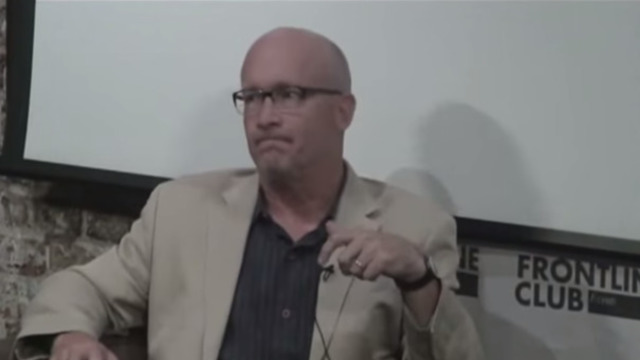
But after the lights came up after the film’s showing and the Question-and-Answer period began, Gibney had a rude awakening.
By the look on his face, he must have been expecting a standing ovation. Instead, his victory lap was quashed by righteous indignation and outright anger.
“I think your film is cowardly and naïve,” said one man. “Nobody’s fooled by your kind of approach. You blew a great chance.”
Gibney was flummoxed. “I don’t know how you want me to respond to that,” he mumbled.
“You don’t have evidence,” said the indignant journalist. “You’re just telling a flock of nonsense, that’s propaganda.”
Petulant, Gibney reposed in his chair. “I see. Fine. Thank you,” he murmured.
But this was just the beginning. Lynn Most of the Foreign Press Association took the floor.
“You don’t know this person,” she said. “And the rules of documentary, if you’re going to interview somebody — unless they’re dead — you have to know the person, you have to interview the person.”
“You’ve come in on your roller blades from America taking on a subject that is so serious and needs a lot of research,” she said. “You don’t put any context into it. You didn’t make your documentary in a scientific way, or in a well-researched way. You made it like People magazine. I’m sorry, this is not a serious documentary and it doesn’t belong in Britain!”
By now the crowd was loudly behind her as she continued.
“Somebody from Britain and who’s trained in investigative journalism would take five years to make this film and you can’t whip this off in two years. You don’t have half of the information.”
By now Gibney’s body had hardened into a brittle shell. He was caught out on his modus operandi: hit job propaganda. Pure tabloid. You can watch the Frontline Club conversation with Alex Gibney.
Alex Gibney, a Bully With a Camera
Alex Gibney likes to throw around the word “bully” about anyone with the temerity to speak out against his lies and fraudulent allegations, such as his recent response in The New Statesman to well-reasoned criticisms of his one-sided portrayal of WikiLeaks’ founder, Julian Assange.
Alex Gibney has made a career of selectively filming only people and events that suit his preconceived agenda, ignoring facts that get in the way. Himself little more than a bully toting a camera who happens to be backed by the resources of an international multi-media conglomerate that revels in his brand of tabloid sensationalism, Gibney tries to foist on viewers his version of the world and the people and institutions he has selected for his hatchet-job treatment.
Yet he objects when his targets cry foul. Those voices may have started with Wikileaks, but they are growing by the day. The Catholic League has denounced Gibney as a dishonest “smear merchant.” Catholic World Report followed suit with this takedown: “The number of outright falsehoods and misleading claims in his film about Church history, teaching and operations could fill a number of articles.” Most recently, the CEO of Apple Computers denounced Gibney for being “opportunistic” for his portrayal of Steve Jobs. Others have joined the chorus. The Daily Beast decried the film as a “hatchet job” and “viciously one-sided” and whose final hour “is an all-out character assassination.”
Every one of these criticisms applies equally to his made-for-TV piece about the Church of Scientology. During the making of that video, Gibney ignored the Church for two years and then attempted to bully the Church into accepting an interview request sight unseen. When the Church sought to provide facts and people with first-hand information on his sources, he ran, all of which you can see in the video below.
In Gibney’s world, the lies and half-truths spewed by him and his “sources” should not be met with holding him to account. All should meekly submit to his skewers.
The world does not work that way. People who have the resources to do so can and do speak up.
Alex Gibney claims he hates bullies. Really? It must be hard to look in the mirror every morning.
The Reviews Are In: Alex Gibney’s Steve Jobs documentary is “lazy,” “heavy handed” and “seems to have forgotten” there are two sides to every story
Alex Gibney’s documentary on Steve Jobs is being roasted by critics, who describe it as a one-sided portrayal of the founder of Apple Computers. Commentators have called it “mean spirited,” “heavy-handed and lazy,” and “one of the worst documentaries… he fumbled it.”
As USA TODAY wrote about the film’s principle failure: “There are always two sides to every story, and in this documentary, filmmaker Alex Gibney seems to have forgotten about that other side.”
Likewise, Alex Gibney did all that and more in his portrayal of the Church of Scientology. He had no interest in any facts that might contradict his premise, and interviewed the usual group of expelled ex-members with their own corruption.
He interviewed no actual Scientologists. In fact, for the two years he spent secretly working on the video, Alex Gibney went out of his way to avoid contacting the Church, visiting a Church or speaking to any of its members. Instead he chose to interview a small group of individuals he well knew were expelled by the Church for malfeasance, incompetence and violence. It was not until his film was in the can that Alex Gibney even bothered to mention it to the Church, which immediately responded.
Day after day, letter after letter poured into Alex Gibney’s office. All made one simple request: A fair opportunity for the Church of Scientology to respond to allegations Gibney was planning to make in his film Going Clear. But all of the correspondence ended up in Gibney’s dead letters file, arrogantly ignored because two years earlier when he launched his film he had already decided it would be a one-sided anti-religious hatchet job.
Presenting a balanced picture is what separates a documentarian from a propagandist. Alex Gibney has shown which side of the ledger he is on.
What is Alex Gibney Hiding from Sydney about his film?
Like Alex in Wonderland, Mr. Gibney headed down the same rabbit hole Rolling Stone magazine found itself trapped in with its University of Virginia debacle—when it came to his film Going Clear:
- Letter after letter poured into Alex Gibney’s office day after day. All made one simple request: A fair opportunity for the Church of Scientology to respond to allegations Gibney was planning to make in his film Going Clear. But all of the correspondence ended up in Gibney’s dead letters file, arrogantly ignored because two years earlier when he launched his film he had already decided it would be a one-sided anti-religious hatchet job.
- Anything from the Church that factually contradicted this premise was ignored. Gibney would not so much as tell the Church any of his allegations or who had gone on camera to make them.
- But then HBO attorneys stated that if the Church had individuals relevant to the sources in the film – who, of course, they refused to name – that they should make them available as soon as possible. So the Church found itself in the middle of an absurd guessing game in which it was being asked to speculate on who was saying what, no doubt because Gibney didn’t want anyone to know he was merely recycling discredited sources used in Lawrence Wright’s book.
- Even though HBO’s lawyers had asked the Church to produce relevant individuals, Gibney chose to shun 25 of them who traveled to New York expressly to see him. All had direct first-hand knowledge of Gibney’s exact sources given they were their children, ex-spouses and former co-workers. But Gibney was loathe to hear the truth from those who know best about the phony, made-up allegations in his film spun by his discredited sources. He had already created the propaganda film he wanted. A UVA Redux.
The difference between Wright and wrong
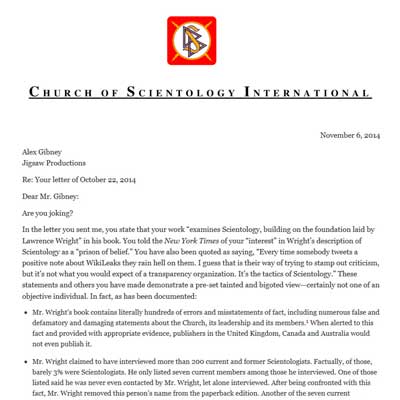
Read the Church’s letter informing Alex Gibney that the Lawrence Wright book Going Clear: Scientology, Hollywood and the Prison of Belief contains hundreds of errors and misstatements, is a “compendium of lies from anti-Scientologists,” and that publishers in the United Kingdom, Canada and Australia refused to publish it. States the letter, “Mr. Wright’s book is demonstrably biased. We are confident the evidence will show that prior to writing either the New Yorker article or his book, Mr. Wright had a preordained view of Scientology and set out from the beginning to make both a self-fulfilling prophecy and the treatise of a bigot.”


Meet Alex Gibney: The propagandist
Alex Gibney is a documentary filmmaker who carries a dirty little secret—well, actually several.
The first is that he has never allowed the truth to get in the way of a good hatchet job.
The second is that he believes facts are pesky things best used sparingly while crafting a prefabricated agenda. According to a fascinating tip from an insider who didn’t appreciate the hatchet job Gibney was doing, declassified government documents on the Internet reveal that Gibney’s dad, Frank, was a journalist who worked with the Central Intelligence Agency in the 1960s on a clandestine project known as Operation Mockingbird—so-named because it mocked the very idea of press ethics.
Alex Gibney and the prison of bigotry
Alex Gibney’s HBO film Going Clear: Scientology and the Prison of Belief is anything but an honest documentary. It’s naked propaganda. Cherry picking the usual handful of admitted liars and smear artists desperate for money and attention, Gibney crafts a one-sided hit piece aimed at inciting religious hatred that he never intended to be fair. Alex Gibney’s embittered malcontents, expelled from the Church of Scientology for chronic lying and criminal activity, regurgitate the same lies and myths they have told for years that were long ago discredited by the courts, their own words, their admissions of lying and even by their own family members. Alex Gibney refused to listen. He wouldn't speak to the Church, listen to the Church or meet with the Church. Sadly, Alex Gibney’s Going Clear is part of a larger disturbing and incendiary First Amendment assault on religious freedoms from those who seek to mock people of faith. Alex Gibney and his co-producer, Lawrence Wright, a proud, self-proclaimed atheist who equates religious beliefs to a “prison,” arrogantly believe they are smarter than anyone else when it comes to exercising religious freedoms. Our information is intended to show the true story behind the Going Clear propaganda manufactured by Alex Gibney, Lawrence Wright and HBO using sources willing to serve up whatever lies are needed.